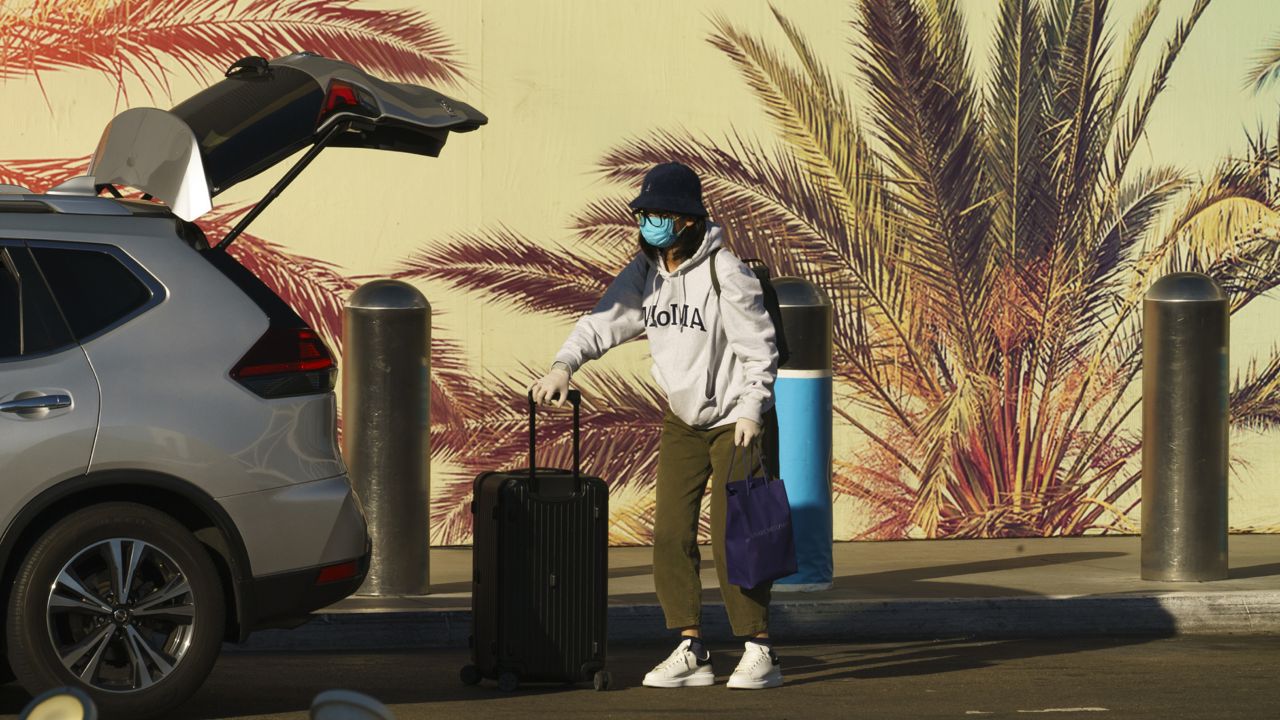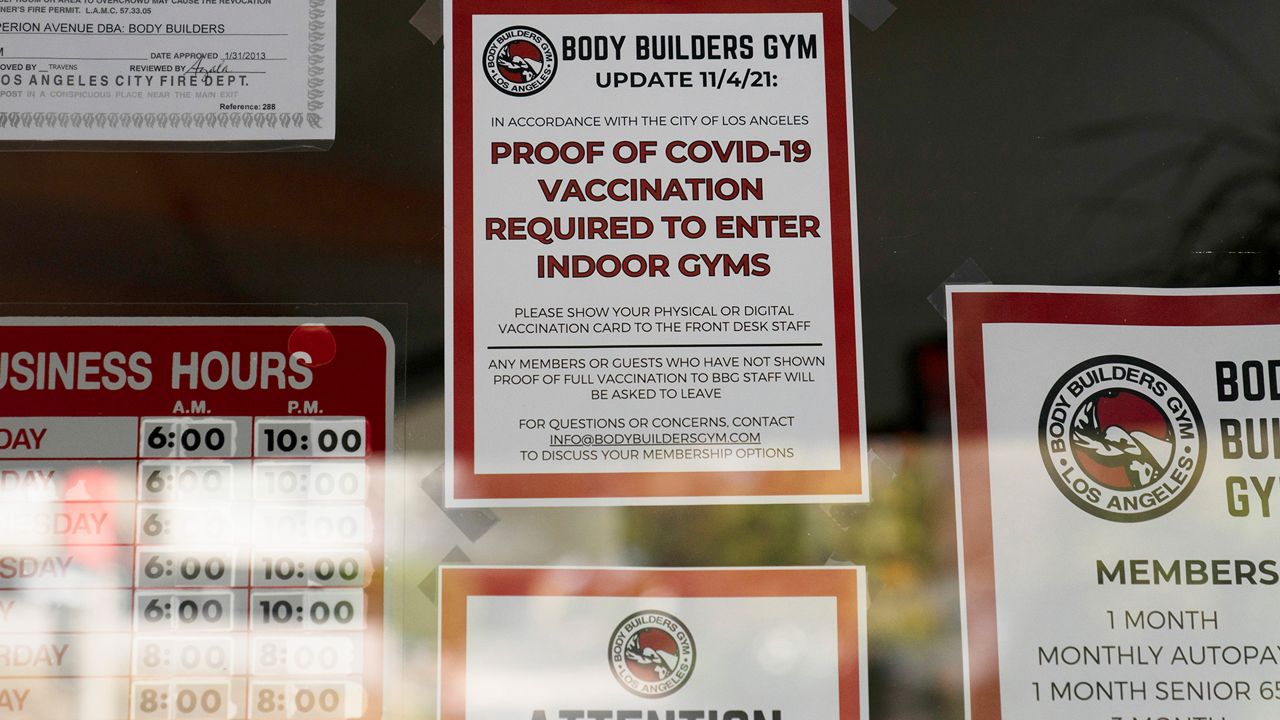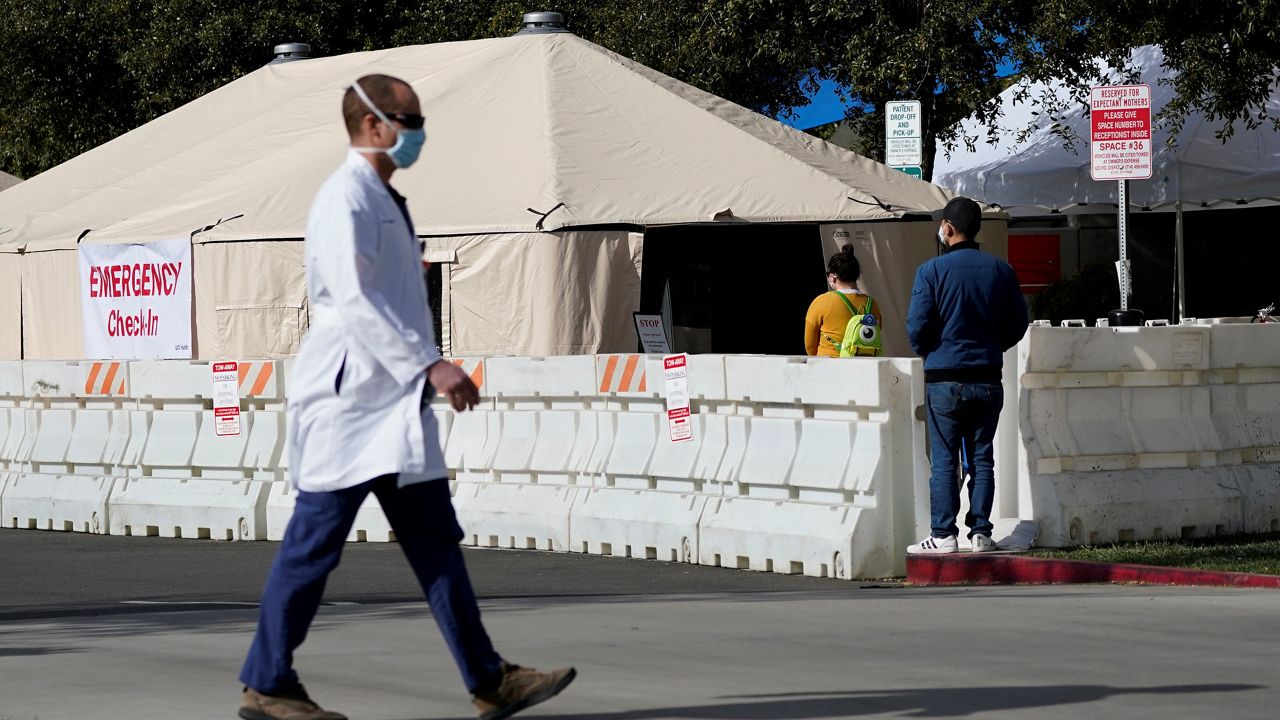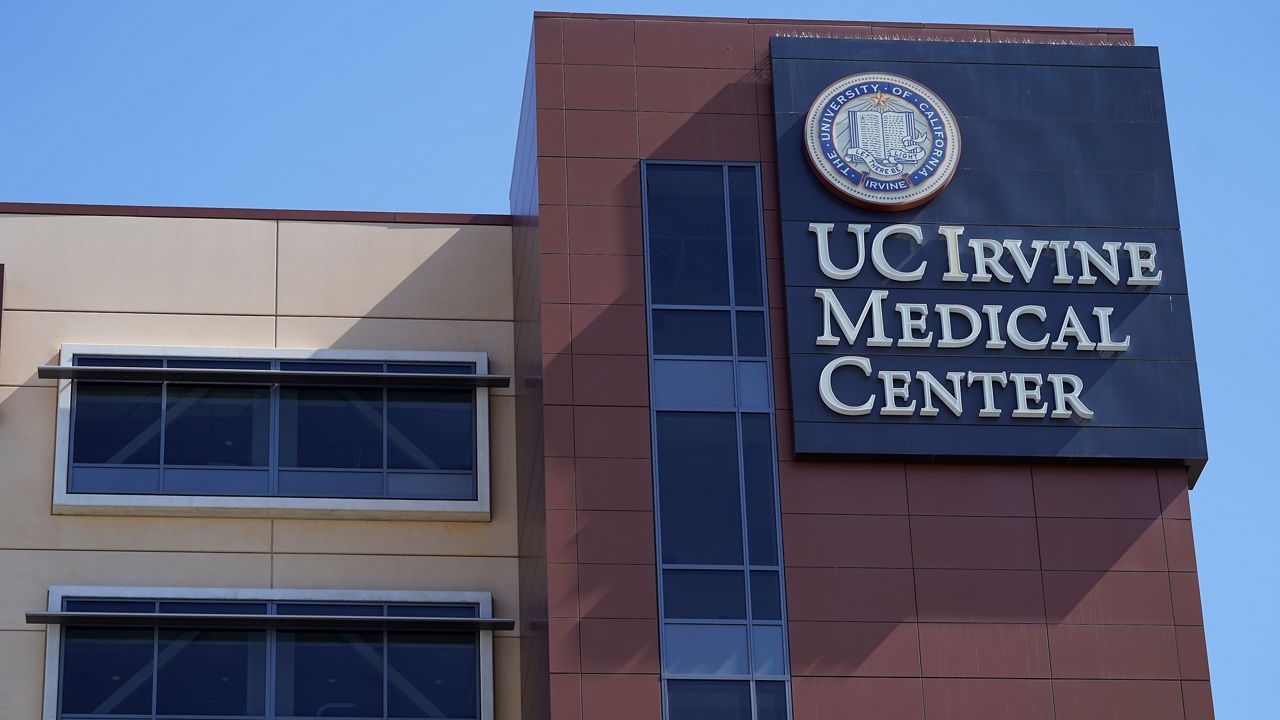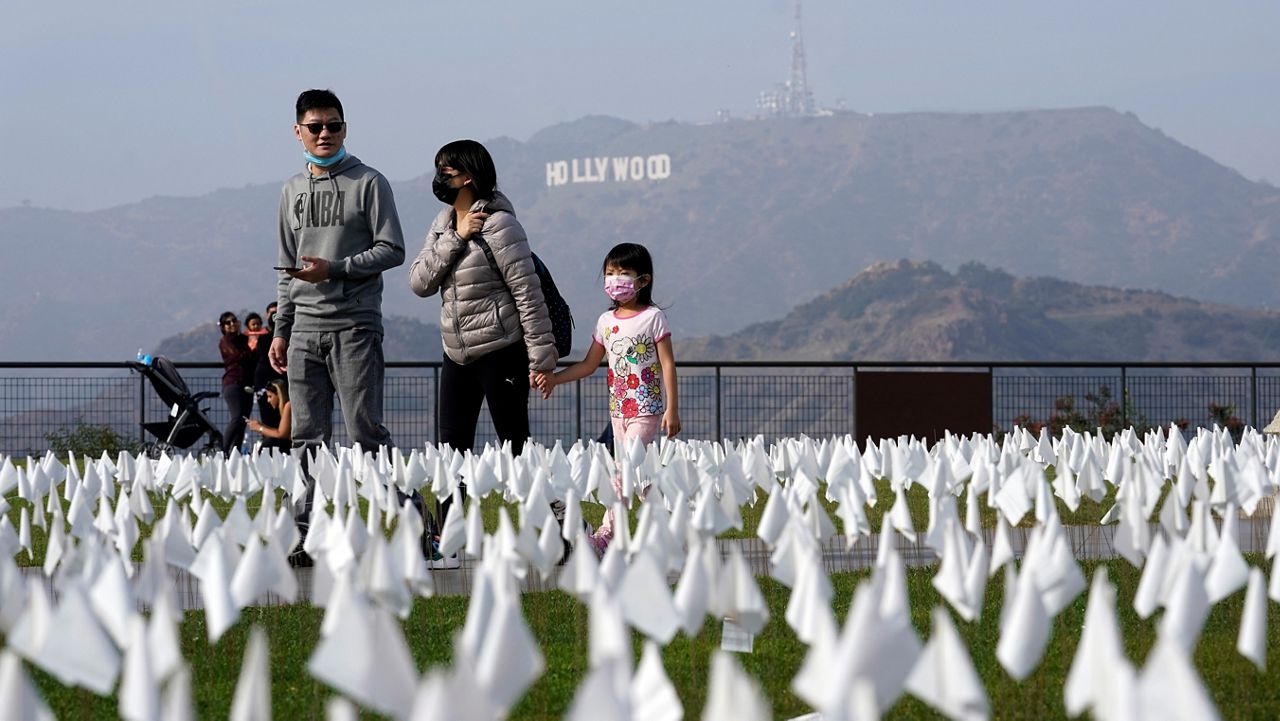LOS ANGELES (CNS) — Los Angeles County reported more than 5,000 new COVID-19 infections Thursday, the highest daily number since the start of the pandemic, and the county's health officer warned that if the surge persists, a strict stay-at-home order could be in place by next week.
Meanwhile, the state on Thursday imposed what amounts to an overnight curfew that will impact all counties in the restrictive "purple" tier of the state's coronavirus monitoring system -- which includes Los Angeles and Orange counties. The "limited Stay At Home Order" prohibits all "non-essential work, movement and gatherings" between 10 p.m. and 5 a.m., beginning Saturday night and continuing until the morning of Dec. 21.
"The virus is spreading at a pace we haven't seen since the start of this pandemic and the next several days and weeks will be critical to stop the surge," Gov. Gavin Newsom said in a statement. "We are sounding the alarm. It is crucial that we act to decrease transmission and slow hospitalizations before the death count surges. We've done it before and we must do it again."
The announcement came about an hour after Los Angeles County Health Officer Dr. Muntu Davis reported a record-setting 5,031 new coronavirus cases. He said the county's surging numbers have now exceeded the spike seen in mid-summer, jumping 68% since the end of October, compared to a 43% increase that occurred between mid-June and early July.
"At this point, no one should be still underestimating the spread of this virus, nor should anyone be questioning the actions we still need to slow the spread and lessen its impact on our collective health and our local economy," Davis said.
Under guidelines released Tuesday by the county Department of Public Health, if the county experiences a five-day average of 4,500 new cases a day, or if hospitalizations exceed 2,000, the county will return to the strict Safer at Home orders that were imposed at the onset of the pandemic. Those rules allow only essential workers -- or people accessing essential services -- to leave their homes. The order will also include a 10 p.m. to 6 a.m. countywide curfew, with only essential workers exempted.
Davis said that with Thursday's record case number, the county now has a two-day average of about 4,500 cases -- the threshold for implementing the stay-at-home restrictions.
"That is only a two-day average and we still have a few more days to go, but if the numbers remain high, potentially by Sunday we could have the five-day average higher than what we would want to see and would need to implement a Safer at Home order," he said. "It wouldn't be today or anytime tomorrow or the day after. We would need five days of an average in order to make that decision."
In an online briefing, Davis repeatedly lashed out at those who have deemed COVID-19 to be a hoax.
"The cases that we're seeing, all of the science -- this is across the world," he said. "I don't think anybody engineered a hoax to be worldwide in terms of a pandemic, let alone across the state, let alone across the region, let alone across the whole United States. These are real, these are scientific tests that are being done. The virus has been isolated from early on in the pandemic.
"Really that's a lot of undue credit to say that this is a hoax and this was just made up in order to do some other things, whether political or not. Based on the science that we see, this virus is real. Based on the case counts that we see, based on the tests that are being done, all of this is real.
"It's unfortunate that someone thinks that this isn't real."
He also bashed notions that the virus is less dangerous than the flu, noting that an estimated 3,133 people died during the 2019-2020 flu season in the county. COVID-19 has caused 7,363 deaths between March and November, despite only infecting about one-third as many residents as the flu.
"COVID-19 has caused more deaths even though it has infected fewer people," he said. "This should serve as a severe demonstration of how much more dangerous COVID-19 is than the flu. It is deadlier and people can become very sick, sometimes for weeks and months. In addition, we're still learning about this virus, but we do already know that for some the complications can last for a long time."
The 5,031 cases announced Thursday, along with 192 reported by Long Beach and 55 announced by Pasadena, lifted the cumulative countywide total since the start of the pandemic to 353,479. The county also announced 29 deaths, although two of those fatalities were actually confirmed Wednesday by Long Beach health officials. Long Beach and Pasadena each announced one additional death. The new deaths lifted the countywide death toll to 7,365.
As of Thursday, there were 1,238 people hospitalized, continuing what is now a 10-day string of increases.
On Friday, the county will impose increased restrictions on business and social activity, most notably requiring restaurants, wineries, breweries and non-essential businesses to close between 10 p.m. and 6 a.m.
Other restrictions set to take effect Friday are:
- Indoor "non-essential" businesses such as retail stores, offices and personal care services will be limited to 25% occupancy;
- Outdoor service at restaurants, wineries and breweries will be limited to 50% of the maximum outdoor capacity;
- Outdoor cardrooms, miniature golf sites, go-kart tracks and batting cages will be limited to 50% of maximum outdoor capacity;
- Customers at personal-care businesses must make advance appointments, and no services that require customers to remove their face masks can be offered; and
- Outdoor gatherings must be limited to no more than 15 people from a maximum of three households.
The county previously issued guidance limiting gatherings to three households, but there was no numerical limit on attendees.
According to the county, if the five-day average of new cases reaches 4,000, or if hospitalizations top 1,750, outdoor dining at restaurants, breweries and wineries will end, with the businesses restricted to pick-up and delivery service only.
The county Safer at Home order would be imposed if the five-day case average reaches 4,500 or more, or if hospitalizations top 2,000 per day.
Unlike all other COVID-19 statistics, the county's rate of coronavirus- related deaths has not yet surged upward. Health officials have attributed that promising fact to improvements in hospital treatment, and the fact that the vast majority of new cases are occurring among younger residents who are less likely to become seriously ill from the virus. But given increasing hospital numbers, the number of fatalities is also expected to eventually rise.
County Health Services director Dr. Christina Ghaly warned Wednesday that an increase in hospitalizations is almost inevitable in the next two weeks, given the virus' incubation period. And the current trend lines indicate that without a dramatic change in case numbers, area hospitals could find themselves overwhelmed with patients in the next month.
"While the steep increase in hospitalizations has only been going on for one week, we cannot ignore the facts," Ghaly said. "If we look at the range of uncertainty going forward then the projected trend over the next four weeks is concerning. The message is very clear. It is highly likely that we will experience the highest rates of hospitalizations that we have seen in the COVID-19 pandemic to date in the next month, unless we take action immediately to substantially reduce transmission within our communities."
The county's seven-day average daily positivity rate among those tested for the virus was 3.9% on Nov. 1, but it rose to 5.1% by Nov. 8 and it now stands at 7.1%.






